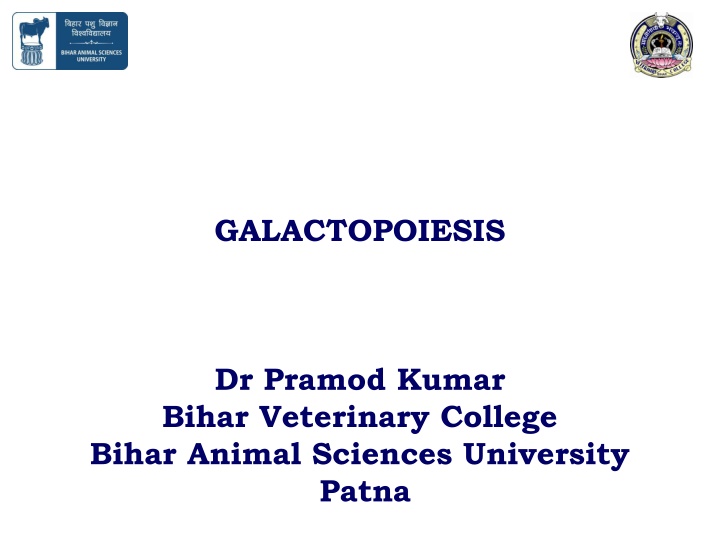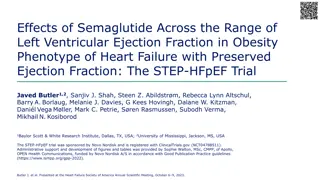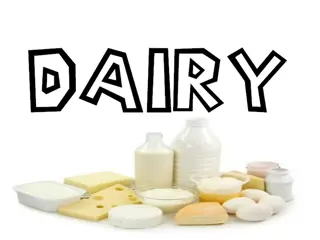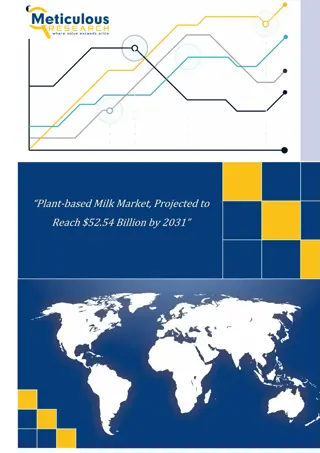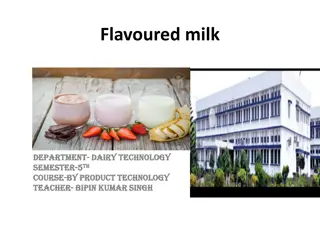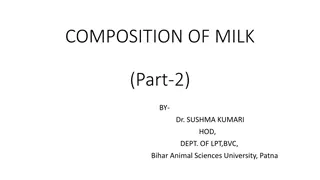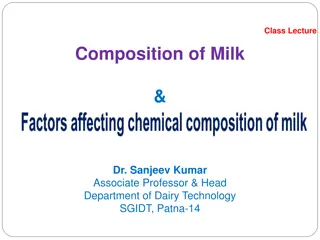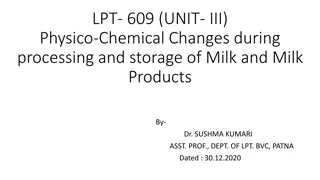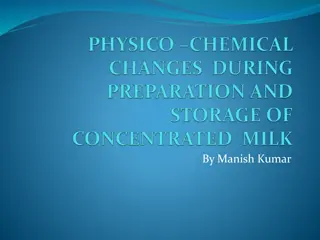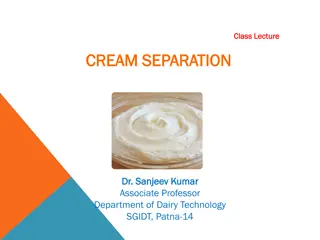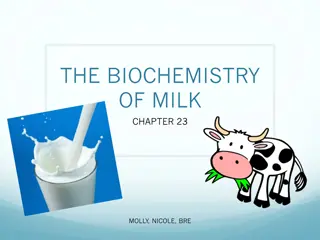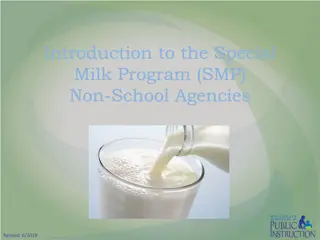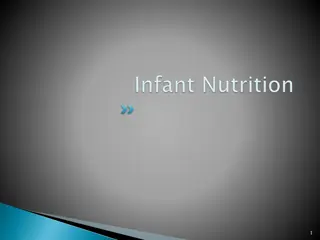Galactopoiesis and Milk Ejection in Veterinary Science
Galactopoiesis is the process of maintaining lactation in animals, involving hormones like prolactin, GH, cortisol, PTH, insulin, and oxytocin. This process also includes the role of progesterone, estrogen, and other hormones in milk production and release. Milk ejection, facilitated by oxytocin, involves a neuroendocrine reflex leading to milk let-down during suckling. Understanding these processes is crucial for proper animal care and management in veterinary science.
Download Presentation

Please find below an Image/Link to download the presentation.
The content on the website is provided AS IS for your information and personal use only. It may not be sold, licensed, or shared on other websites without obtaining consent from the author.If you encounter any issues during the download, it is possible that the publisher has removed the file from their server.
You are allowed to download the files provided on this website for personal or commercial use, subject to the condition that they are used lawfully. All files are the property of their respective owners.
The content on the website is provided AS IS for your information and personal use only. It may not be sold, licensed, or shared on other websites without obtaining consent from the author.
E N D
Presentation Transcript
GALACTOPOIESIS Dr Pramod Kumar Bihar Veterinary College Bihar Animal Sciences University Patna
Progesterone proliferation of secretory tissues. In vivo, sequential addition of insulin, glucocorticoid and prolactin leads to biosynthesis of casein and lactose. Progesterone differentiation of secretory cells. Sensitivity of individual cells to progestational inhibition may decrease variably interdependent upon relative increases in estrogen, prolactin, corticoids and growth hormone to cause asynchronies at calving. and estrogen stimulate inhibits which may be
Galactopoiesis (maintainance of lactation) Prolactin GH Cortisol PTH Insulin Oxytocin
Ejection of Milk: Oxytocin Milk let down reflex or suckling reflex Neuroendocrine reflex spinal cord Suckling of teats Afferent conduction of APs Contraction of the myoepithelial cells Oxytocin secretion hypothalamus Ejection of milk Prolactin secretion Increase milk in the alveoli
Role of hormones Estrogen & Progesterone specific effect of both these hormones is to inhibit the actual secretion of milk Prolactin: stimulates milk production Oxytocin: stimulates milk release Human chorionic somatomammotropin: lactogenic properties and support action of prolactin
